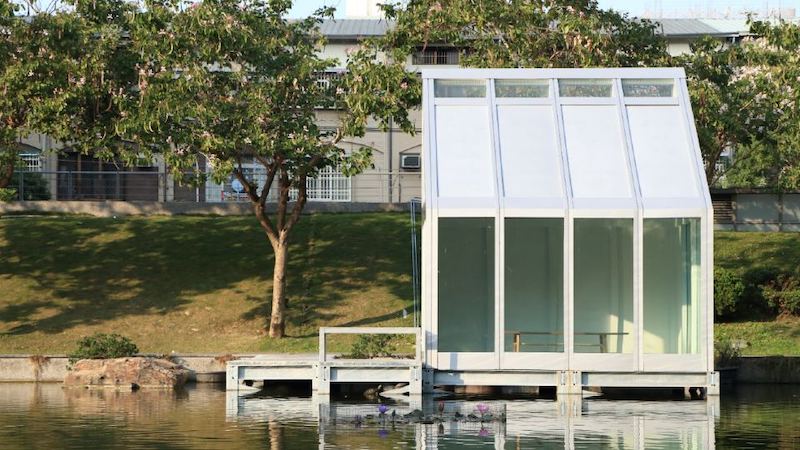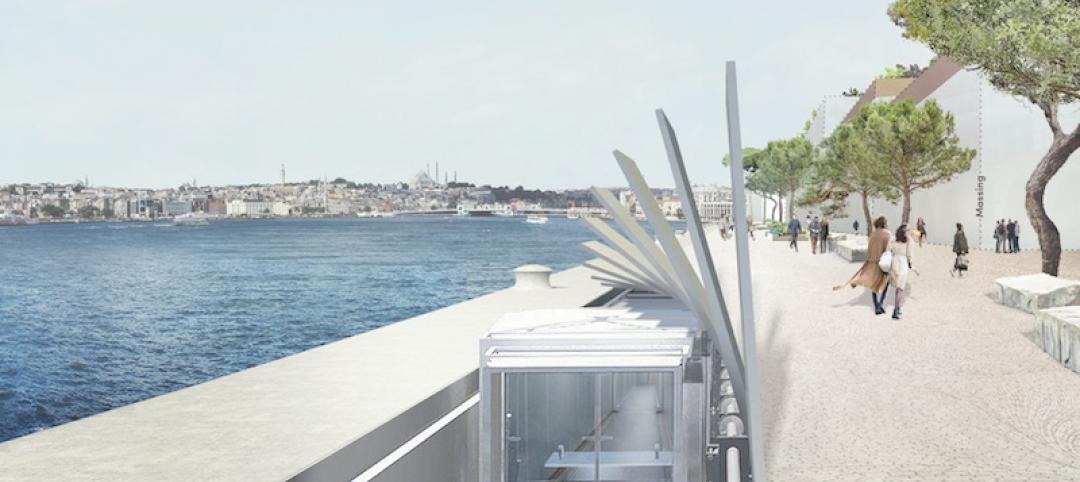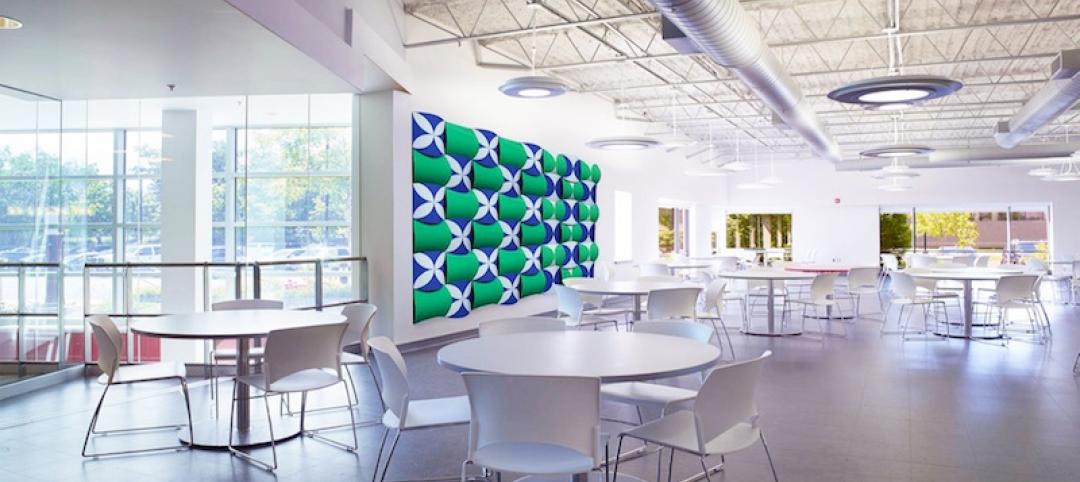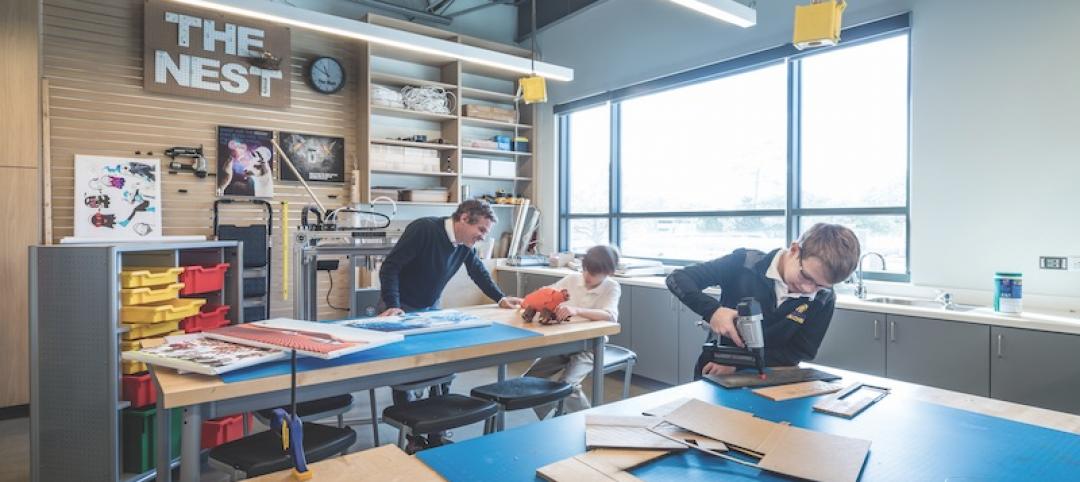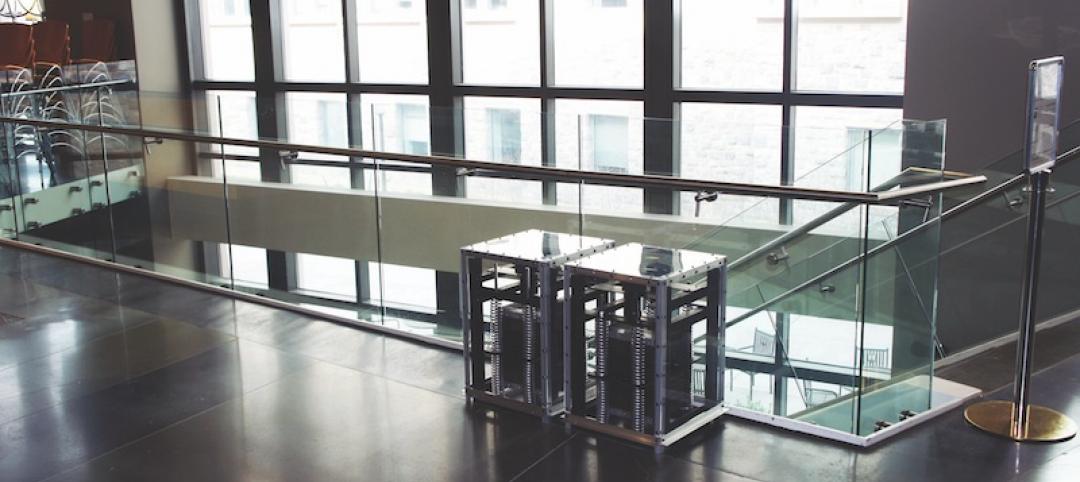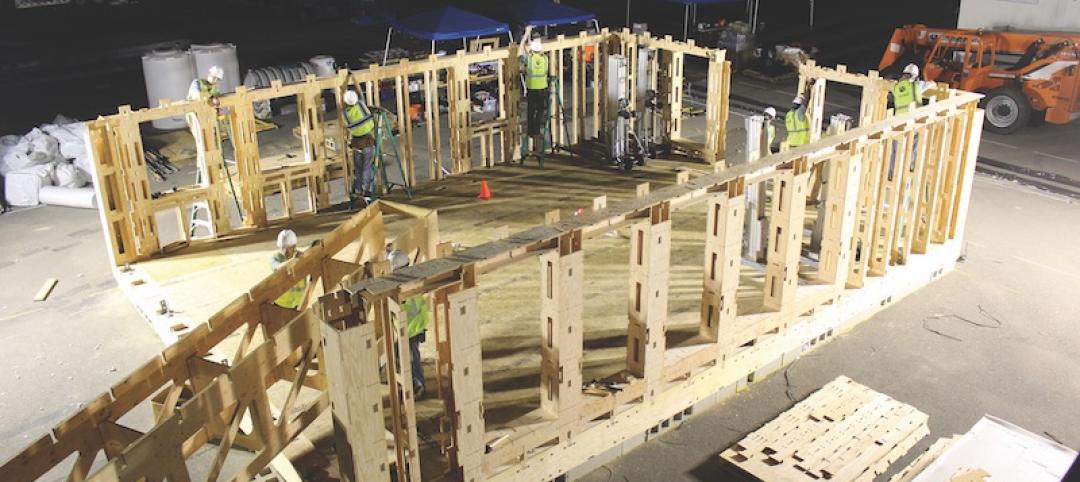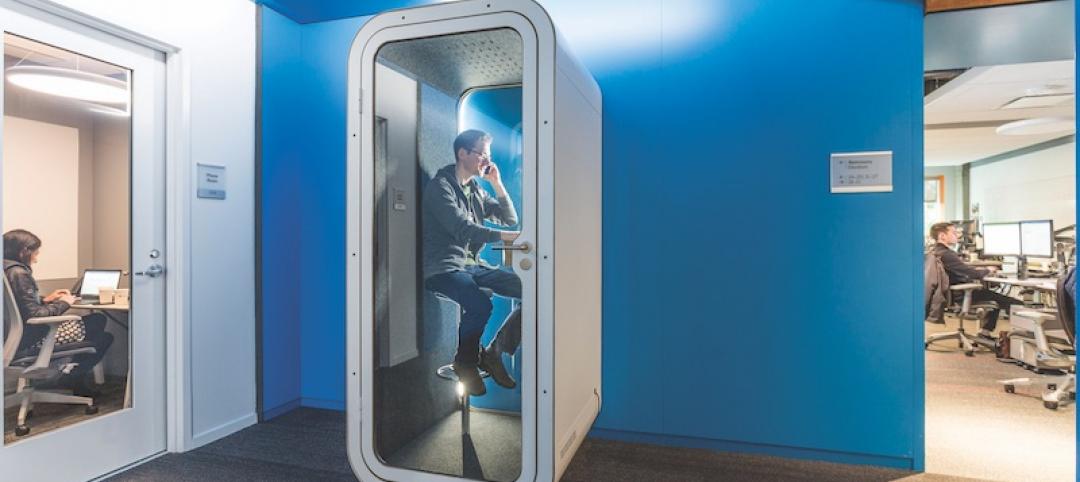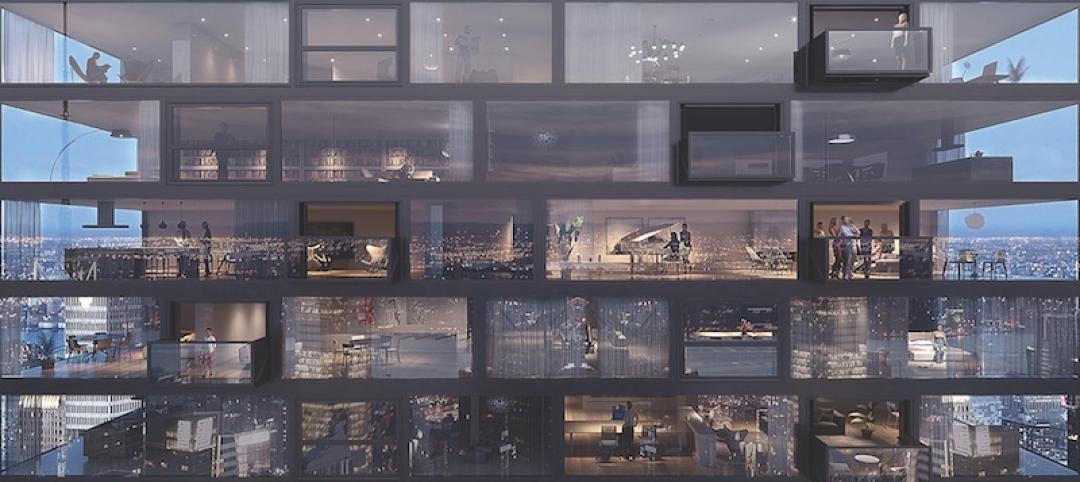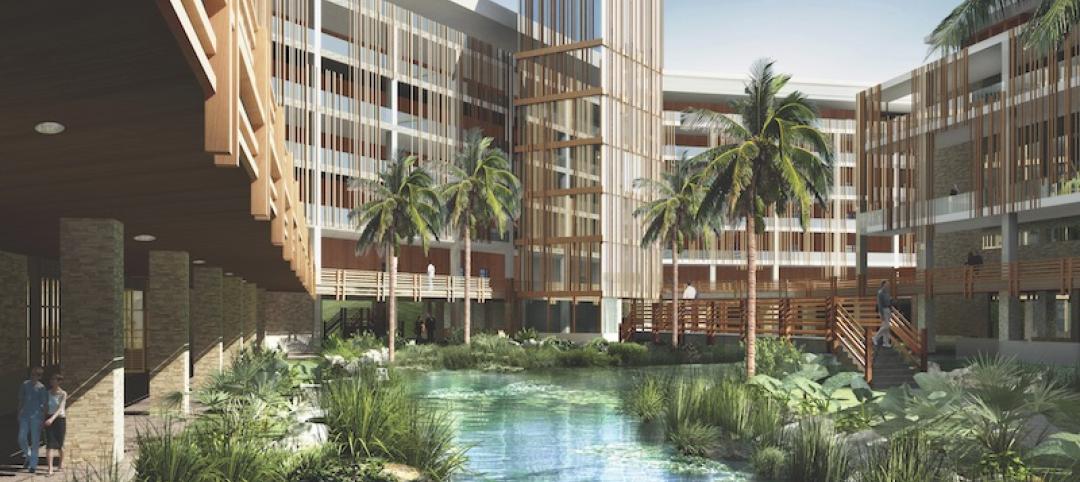Created by Dr. Matyas Gutai of Loughborough University, the water-filled glass (WFG) system uses water to heat and cool structures in an attempt to reduce building energy use. WFG utilizes a sheet of water trapped between a panel of glass. The system involves connecting the water-filled window panels to a storage tank, which can be located anywhere in the building, using pipes hidden in the walls, allowing the water to circulate between the two.
In warm weather, the buildings stay cool as the water absorbs external and internal heat. The warm water is then circulated to the storage tank. The heat is stored in the tank where, if the building temperature drops, it can be brought back to the walls to reheat the building using a monitoring system similar to central heating. The water can also be used for hot water supply.
Gutai has recently developed a version of the WFG system that uses a heat pump, which can heat and cool the water depending on the season.
Two prototype buildings, located in the differing climates of Hungary and Taiwan, have been created to test the system. Gutai used data gathered from these two “water houses” to develop a simulation system that evaluates the energy performance of the structures and the WFG system.
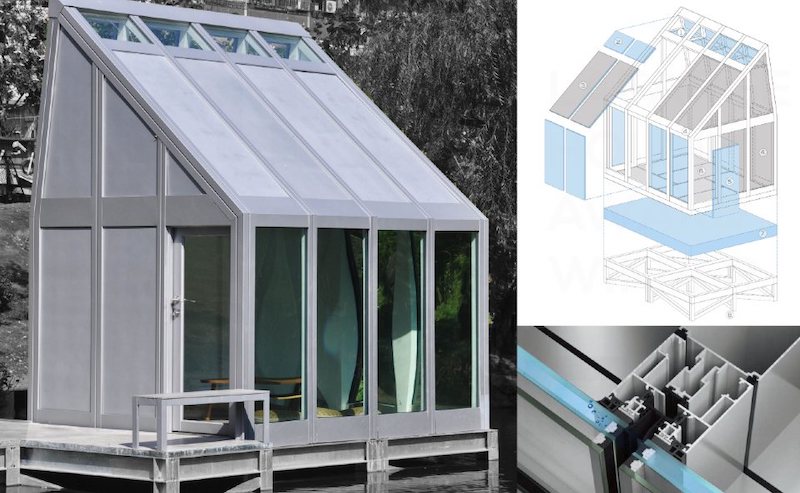 Developed by Loughborough University professor Matyas Gutai, water-filled glass utilizes a sheet of water trapped between a panel of glass to help regulate temperature swings in buildings. Simulation testing shows the technology will perform in all major climate regions.
Developed by Loughborough University professor Matyas Gutai, water-filled glass utilizes a sheet of water trapped between a panel of glass to help regulate temperature swings in buildings. Simulation testing shows the technology will perform in all major climate regions.
A July 2020 study, Energy Consumption of Water-filled Glass (WFG) Hybrid Building Envelope (bit.ly/2ZZMHFR), Gutai focused on the annual energy consumption for a typical office space (17.5 sm) with one glazed façade of equilateral orientation (south in the northern hemisphere). He used the simulation to explore how this office with a WFG system would fair in 13 cities from all major climate regions. Gutai then compared the WFG system with traditional systems of double-pane low-e and triple-pane filled with argon gas.
Among the findings of Gutai’s study:
• WFG is able to use the absorption of the water effectively to improve the energy performance of glass
• The water layer lowers the load for heating and cooling effectively, minimizing daily and seasonal peaks
• The WFG system saves energy in all major inhabited regions (every climate region except polar) with savings of 47-72% compared to double-pane low-e glass and 34-61% compared to triple-pane argon-filled glass.
“Glass is currently a liability in buildings as it compromises energy consumption, thermal comfort, acoustics and other aspects,” said Gutai. “WFG changes this paradigm and turns glass into an opportunity for sustainable construction. It shows us that thinking holistically about buildings and building components leads to a more efficient and sustainable built environment.”
Additional benefits of WFG include acoustics, reducing the need for building shading, and eliminating the need to color the glass.
Related Stories
Great Solutions | Sep 14, 2017
Hydraulic underground boardwalk and gangway system reunites the public with the coastline in Istanbul
The bespoke system is part of a master plan by Dror and Gensler that creates the world’s first underground cruise operation.
Great Solutions | Aug 14, 2017
Transmogrifying ‘E ink,’ energy-harvesting paint remove the ‘fiction’ from ‘science fiction’
These materials can turn an ordinary wall into dynamic real estate.
Great Solutions | Jul 12, 2017
The writing on the wall: Maker spaces encourage students to take an active role
Maker spaces, dry-erase walls, and flexible furniture highlight Kinkaid’s new Learning Center.
Great Solutions | Jun 6, 2017
Good vibrations: Portable tuned mass damper provides lightweight, cost-effective way to reduce structural vibrations
Developed by a team at Virginia Tech, the PTMD has been shown to reduce vibrations by as much as 75%.
Great Solutions | May 5, 2017
No nails necessary: Framing system comes together with steel zip ties and screws
Clemson University’s School of Architecture develops a patent-pending construction method that is gaining attention for its potential use in rapid, low-tech sustainable housing.
Great Solutions | Apr 6, 2017
Phone booths for the 21st century
Spotting a phone booth on a public street may not become any less rare, but they may soon become fixtures in the modern office.
Great Solutions | Mar 8, 2017
Pop-out balcony is a breath of fresh air for stuffy hotel rooms and apartments
In less than one minute, Bloomframe transforms from an insulated picture window to an open balcony.
Great Solutions | Feb 3, 2017
Drone-based hospitality concept looks to make nomads of us all
Driftscape could take the resort industry to places no hotel has ventured before.
AEC Tech | Sep 6, 2016
Innovation intervention: How AEC firms are driving growth through R&D programs
AEC firms are taking a page from the tech industry, by infusing a deep commitment to innovation and disruption into their cultural DNA.
Great Solutions | Aug 23, 2016
GBBN designers take on wellness research
In a new research paper, three healthcare specialists present factors that contribute to a psychological state that is receptive to healing.


